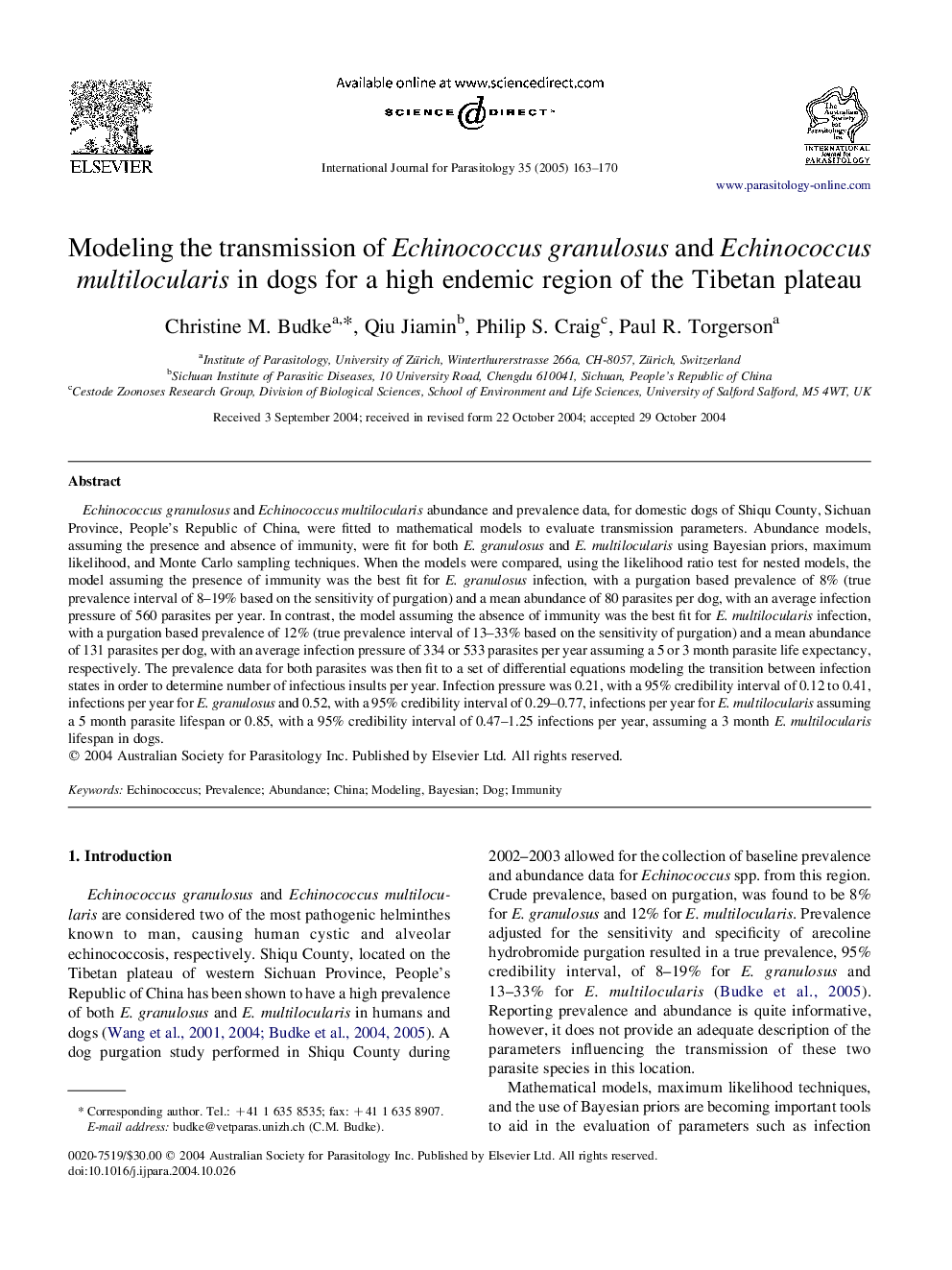| کد مقاله | کد نشریه | سال انتشار | مقاله انگلیسی | نسخه تمام متن |
|---|---|---|---|---|
| 8980041 | 1107389 | 2005 | 8 صفحه PDF | دانلود رایگان |
عنوان انگلیسی مقاله ISI
Modeling the transmission of Echinococcus granulosus and Echinococcus multilocularis in dogs for a high endemic region of the Tibetan plateau
دانلود مقاله + سفارش ترجمه
دانلود مقاله ISI انگلیسی
رایگان برای ایرانیان
کلمات کلیدی
موضوعات مرتبط
علوم زیستی و بیوفناوری
ایمنی شناسی و میکروب شناسی
انگل شناسی
پیش نمایش صفحه اول مقاله

چکیده انگلیسی
Echinococcus granulosus and Echinococcus multilocularis abundance and prevalence data, for domestic dogs of Shiqu County, Sichuan Province, People's Republic of China, were fitted to mathematical models to evaluate transmission parameters. Abundance models, assuming the presence and absence of immunity, were fit for both E. granulosus and E. multilocularis using Bayesian priors, maximum likelihood, and Monte Carlo sampling techniques. When the models were compared, using the likelihood ratio test for nested models, the model assuming the presence of immunity was the best fit for E. granulosus infection, with a purgation based prevalence of 8% (true prevalence interval of 8-19% based on the sensitivity of purgation) and a mean abundance of 80 parasites per dog, with an average infection pressure of 560 parasites per year. In contrast, the model assuming the absence of immunity was the best fit for E. multilocularis infection, with a purgation based prevalence of 12% (true prevalence interval of 13-33% based on the sensitivity of purgation) and a mean abundance of 131 parasites per dog, with an average infection pressure of 334 or 533 parasites per year assuming a 5 or 3 month parasite life expectancy, respectively. The prevalence data for both parasites was then fit to a set of differential equations modeling the transition between infection states in order to determine number of infectious insults per year. Infection pressure was 0.21, with a 95% credibility interval of 0.12 to 0.41, infections per year for E. granulosus and 0.52, with a 95% credibility interval of 0.29-0.77, infections per year for E. multilocularis assuming a 5 month parasite lifespan or 0.85, with a 95% credibility interval of 0.47-1.25 infections per year, assuming a 3 month E. multilocularis lifespan in dogs.
ناشر
Database: Elsevier - ScienceDirect (ساینس دایرکت)
Journal: International Journal for Parasitology - Volume 35, Issue 2, February 2005, Pages 163-170
Journal: International Journal for Parasitology - Volume 35, Issue 2, February 2005, Pages 163-170
نویسندگان
Christine M. Budke, Qiu Jiamin, Philip S. Craig, Paul R. Torgerson,